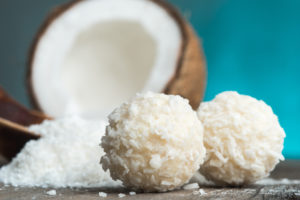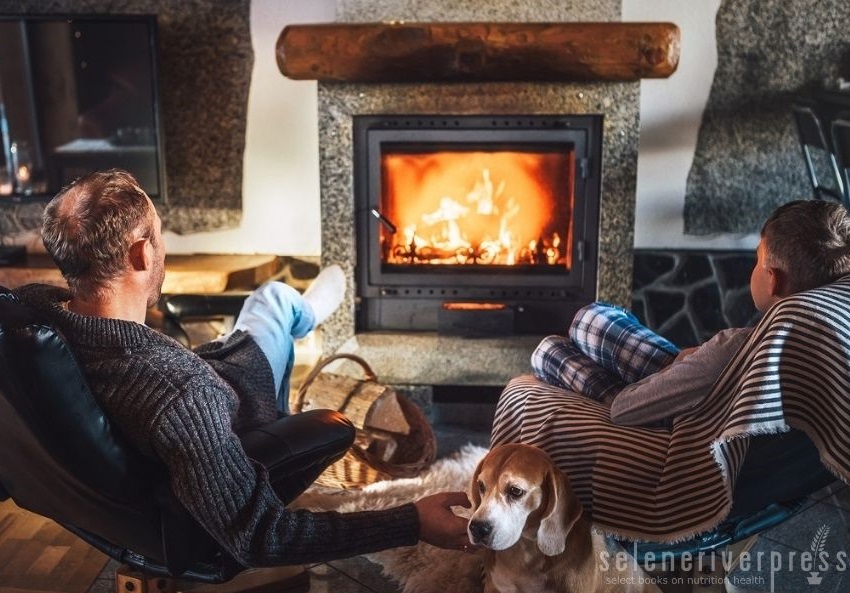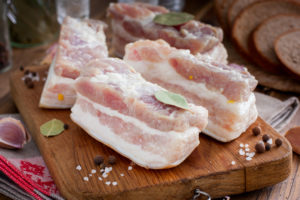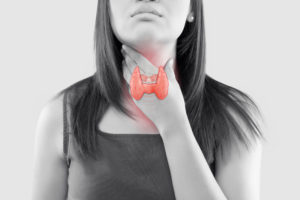As October is the start of cold weather for a good portion of the country, I’ve been getting requests from readers asking how to avoid that annoying winter cold. (And in this particular year, I’ve also been getting questions on how to avoid the dreaded coronavirus!) For starters, I recommend that you make every possible effort to stay away from antibiotics and their dangerous side effects. Antibiotics essentially kill not just the bad guys but also the good gut flora that keep us healthy in numerous ways. Read on for some more recommendations on how you and your family can remain sick-free all winter.
What Causes the Dreaded Winter Cold?
In an article from Healthline, Dr. William Schaffner, an infectious disease expert at Vanderbilt University in Tennessee, is quoted discussing two reasons that make us more likely to get sick in the colder months. The first reason is simply that we are indoors for much of the winter, which means we are having more prolonged contact with each other. But he also brings up a second reason: humidity. As Dr. Schaffner explains:
“‘When we transmit viruses from one person to another, we’re usually 3 feet [from] each other —the so called breathing zone…When we’re in a time of low humidity such as we have in the winter time, it appears that that little bit of moisture that surrounds the virus evaporates, so the virus remains in the air for a sufficiently prolonged time so that the person who is sufficiently close to me can breathe it in.’”
The Best Way to Avoid the Dreaded Winter Cold
In addition to bolstering your immune system (a thorough reading of this blog post on the immune system is your #1 defense), I also want to discuss something that is rarely considered as a vital secondary defense. What is it? Warmth. (Even the word warmth is comforting and reassuring.)
I found an article at WebMD titled “Why Are Colds More Likely in Winter?” that provides this interesting answer (emphasis mine):
“Though it’s never been scientifically confirmed, conventional wisdom has it that winter is the season of sniffles. Now, new animal research seems to back up that idea. It suggests that as internal body temperatures fall after exposure to cold air, so too does the immune system’s ability to beat back the rhinovirus that causes the common cold.”
The article goes on to state that “cooler ambient temperature would likely increase the ability of the virus to replicate well and to develop a cold.”
An Expert Discusses the Intricacies of Warmth
As many of you know, I am a chapter leader of the Weston A. Price Foundation. In a recent discussion group on the topic of what keeps us warm, another chapter leader, practitioner Karen Lyke, submitted an interesting medical answer. I’ve asked her permission to share this discussion below, and I hope you’ll find it as valuable as I did.
The core of our discussion was about how carbs, vegetables, and fats work in both vegetarians and meat eaters to produce warmth. Following is Karen’s contribution to the subject. (However, I might add that many healthy fats come from pasture-raised animals, such as lard, tallow, and butter. Coconut oil is also great choice.)
Vegetable matter provides the “nuts and bolts”—small ancillary pieces, but not the key components. Vegetarians have to put so much energy into assembling fatty acids, cholesterol, and proteins that there’s nothing left, neither materials nor the energy, to use the finished product. Then there’s the reality that humans simply don’t have the enzymes—or the structure (multiple stomachs) to accommodate the microbes that could provide such enzymes—needed to extract usable anabolic (building) nutrients out of plant matter.
Meanwhile, the strictly vegetarian diet chugs along, removing more and more of the body’s physical structure and components, stripping out whatever seems to be expendable for the emergency of malnourishment each day. Muscles and connective tissue (especially joints—think weakness in the knee, ankle, and spine, as well as loss of bone density in both minerals and matrix) are cannibalized so the body can access materials for the most basic, simple functions, such as generating ATP [adenosine triphosphate].
The lack of carnitine, found in carne (meat) or animal products, makes it more difficult for the cells to use their preferred fuel of fat, so the cells shift to the inefficient use of carbs for fuel, and fatigue sets in. Fats are the preferred, more reliable fuel, despite what they told us in biochemistry and even biology 101 about carbs being “necessary” for fuel.
On carbs, the cells are trying to function on a handful of twigs instead of sturdy logs to sustain the fire. After a while, the body starts throwing bits of organs into the fire, and reproductive capacity is shut down because there’s not anything left to take care of offspring anyway. Read that as cessation of menstrual cycle in women, loss of erections and libido—often interpreted as being on a “higher spiritual plane” and less interested in fleshy matters—namely, men.
Mental agility suffers as well. This is characterized as the rigidity of thought that insists that vegetarianism is righteous, etc., and then there’s brain fog. The brain fog often manifests as a word salad of thoughts, incomplete sentences, lack of focus, wandering all over the place. That’s a major indicator of imbalance of fatty acids, insufficient cholesterol, and trashed cell membranes.
The only successful (sort of, in contrast to the robust carnivores) vegetarians that Dr. Price found ate copious amounts of dairy products (often fermented), eggs from fowl as well as fish, probably reptiles as well. There’s a wonderful account of two societies on a South Sea Island [as described in Dr. Price’s book Nutrition and Physical Degeneration].
The inland, mountain-dwelling vegetarians and the fishing shore folk were constantly at odds with each other. However, once a year or so, the coastal dwellers happily let the mountain people come to their shore territory and collect shellfish. If they didn’t, the inland vegetarians became cannibals and ate the shore folk. All living creatures instinctively know what their bodies need.
Lierre Keith’s The Vegetarian Myth, Mara Kahn’s Vegan Betrayal, and Dr. Natasha Campbell-McBride’s Vegetarianism Explained each describe the process quite well. The first two really hit hard on the (erratic) mental state.
The ethical issue is modern “farming” methods (really, the exploitation of natural resources): the CAFOs, the petroleum dependence for fertilizers, ’cides, machinery, soil destruction, mechanization, and deliberate disregard of the life element.
The Creator set it up right in the first place, with the whole cycle of growth, balance, decay, renewal through microbes, soil, plants, animals, humans, microbes, manure, more microbes, and so on. It’s arrogance to think that humans: a) know everything already; and b) can do it better than God and nature by disrupting the cycle. “Arrogance” is perhaps judgmental, even if it is accurate. Maybe presenting this fact as a question rather than a judgmental statement would go over better with the person you mention. What’s more ethical than working with the system the way the Creator set it up? Sad to say, sometimes people have to end up deeply in “the pit” before they realize it’s the wrong road.
Last but not least, the thyroid plays a key role in keeping you warm.
Be sure to have proper thyroid testing done if you are consistently too hot or too cold. See a natural health practitioner or your medical doctor.
The article “How Body Temperature Is Affected by Thyroid Hormone” from Medical News Today reports: “Researchers say they have discovered how thyroid hormone affects blood vessels to determine body temperature, potentially explaining why people who have disorders of the thyroid gland have higher sensitivity to environmental temperature. An overactive thyroid (hyperthyroidism) can cause a person to feel too hot, while an underactive thyroid (hypothyroidism) can cause a person to feel too cold.
Now, how about a few warming recipes with fat (coconut oil) as the central ingredient?
Sugar-Free No-Bake Cookies
—Adapted from Nicole Eckman, RD
Should you feel queasy after eating these cookies or other high-fat foods, it may be an indication of gallbladder issues and trouble digesting fats. Standard Process Betafood and/or Cholacol would then be indicated.
Personal note: Although this recipe includes cocoa powder as an alternative flavoring ingredient, I would like to mention that Sally Fallon Morell of the Weston A. Price Foundation warns against cocoa in any form due to the theobromine content in cocoa. Theobromine has a strong negative stimulating effect on the adrenals. If you follow Sally’s Wise Traditions diet philosophy, do not use cocoa or chocolate.
Ingredients
1½–2 cups unsweetened coconut flakes
2 tablespoon raw cocoa powder (optional)
½ cup coconut oil, slightly melted
¼ teaspoon vanilla extract
Alternatives: Feel free to add 1 tablespoon almond butter. You may also substitute 1 teaspoon carob powder for the cocoa powder and/or replace half of the coconut oil with butter. (Please see my note on cocoa powder above.)
Instructions
- Pulse all ingredients in blender or food processor, stopping to scrape down the sides and bottom, until creamy. If mixture is too dry, increase coconut oil to ½ cup plus 2 tablespoons. (Dryness might be caused by larger coconut flakes, so adjust that amount as well if needed.)
- Line a cookie sheet with parchment paper.
- Scoop a tablespoon of dough onto cookie sheet. Flatten into round “cookies.” Store in fridge or freezer. Eat as a snack as soon as you are aware of a hypoglycemic event or in time to prevent one.
Coconut Pops
—From The Nourishing Traditions Cookbook for Children, p. 207: “These popsicles are especially good to eat when you have a cold or sore throat. Coconuts contain a special fat that helps your body fight bad bacteria.”
Ingredients
1 can organic whole coconut milk
¾ cup coconut water
¼ cup maple syrup
Special equipment:
4-cup glass measure
Spoon
Popsicle molds
Instructions
- Put the ingredients in a glass measuring cup or bowl with a pour spout.
- Mix together with a spoon.
- Pour into popsicle molds and freeze for least 4 hours.
Afterthoughts from the Traditional Cook
Warmth
What a great feeling.
The same sensation of those sweet orange rays of the sun.
When the sun rises is brings warmth to all its searching beams touch.
Warmth is the subtle heat from a campfire.
When you and friends are roasting mallows.
Warmth is not only physical
Is it also emotional
Warmth is when somebody is kind to you.
Like giving you a hug on a bad day.
Warmth may come from a significant other.
Maybe when they hold your hand
Maybe when they say the three magic words “I love you.”
Warmth is also when you do the same kindness for others.
Not only will you be the warmth in someone else life.
You might add a little sunshine to yours as well in return.
This warmth physical and mental keeps us toasty
in this otherwise bleak and cold world.
May your day be full of sunshine and happiness.
—“Warmth,” Peter Tanner, January 2015
[xyz-ihs snippet=”End-Authors-Note”]Disclaimer from Maria Atwood, CNHP: I am a Certified Natural Health Professional, CNHP, not a medical doctor. I do not diagnose, prescribe for, treat, or claim to prevent, mitigate, or cure any human diseases. Please see your medical doctor or health practitioner prior to following any recommendations I make in my blog posts or on my website.
Image from iStock/Solovyova (main), poplasen (coconut balls), Ann_Zhuravleva (salted lard), Tharakorn (thyroid).






